Preparation
Before you begin please ensure that: Terraform installed.
1. AWS Account
You need to collect your AWS IAM User access_key and secret_key of your account. After that, creating terraform.tfvars file in your projects and replacing your information:
# terraform.tfvars default loading when applying
# if you change its name, please add arguments -var-file="[new_name].tfvars"
# Enter your access_key and secret_key for your account
access_key = "[your_account_access_key]"
secret_key = "[your_account_secret_key]"
If you don’t have already IAM User access key, please go to > Create IAM User.
terraform.tfvars file contains security credentials. Please prevent it from uploading your secret infomation by adding *.tfvars line in .gitignore if you are using git.
2. A Project
Preparing website project. This project will be deployed on ECS environment. For me, I will use available static website named: company-business
You can clone company-business project on my github repository.
My Project Structure
├── appspec.yaml
├── build-appspec.sh
├── buildspec.yaml
├── Dockerfile
└── company-business
└── [project-data-inside]
- buildspec.yaml: define the works that CodeBuild will do. It also call build-appspec.sh to update enviroment variable when completing building process. Docker will build image base on Dockerfile in this stage.
- appspec.yaml: define the works that CodeDeploy will do.
3. Workshop Structure
This structure represents where files are located and all these files work together in the root module to define and manage the infrastructure as code using Terraform.
Inside templates folder is json template file and servies roles, policies. All these data below will be created during this workshop:
My Workshop Structure
├── .gitignore
├── ECS-AutoScaling.tf
├── ECS-main.tf
├── main.tf
├── terraform.tfvars
├── tf-environment.tf
└── templates
├── ecs_container.json.tpl
└── policies
├── app_autoscale_role.json
├── codebuild_policy.json
├── codebuild_role.json
├── codedeploy_policy.json
├── codedeploy_role.json
├── codepipeline_policy.json
├── codepipeline_role.json
├── ecstask_policy.json
└── ecstask_role.json
4. Create IAM User [Optional]
If you do not have any IAM User, please folow below steps to create it:
Go to AWS IAM User, and click Create user:
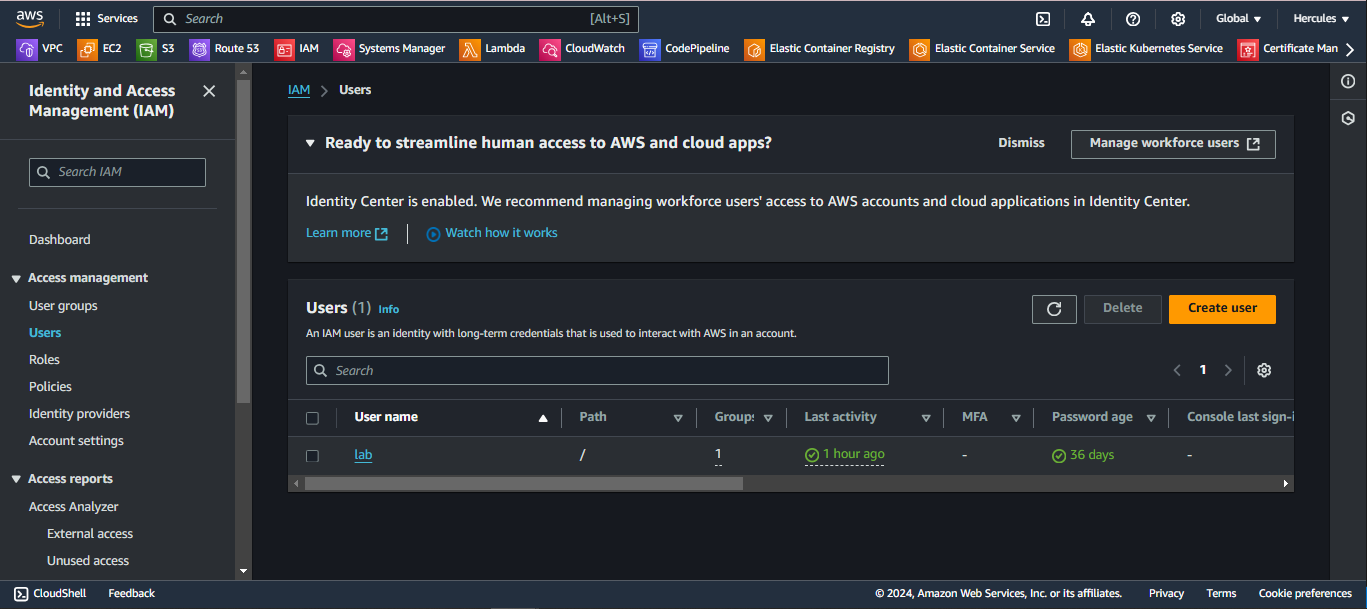
Step 1: Enter your IAM User and click on Next button to continue:

Step 2: Set permission for your IAM User.
- Choose Attach policies directly
- We will set
AdministratorAccesspermissions policy. - Click on Next button to continue:
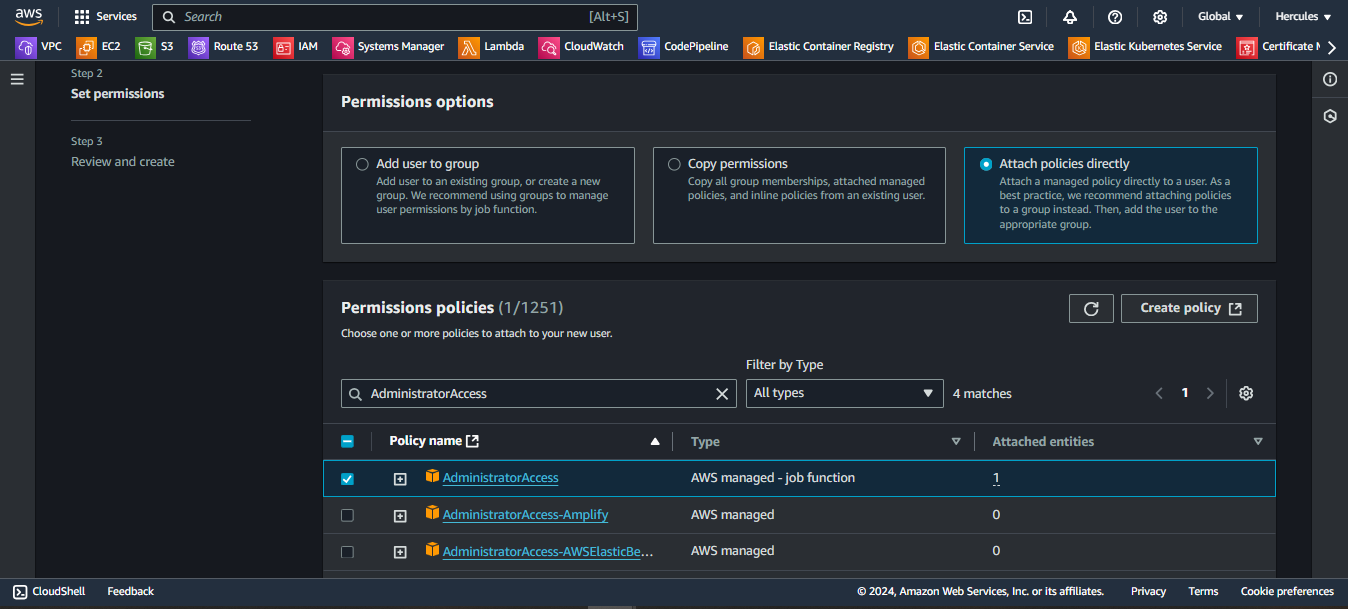
Step 3: Review and create. Click Create user to start:
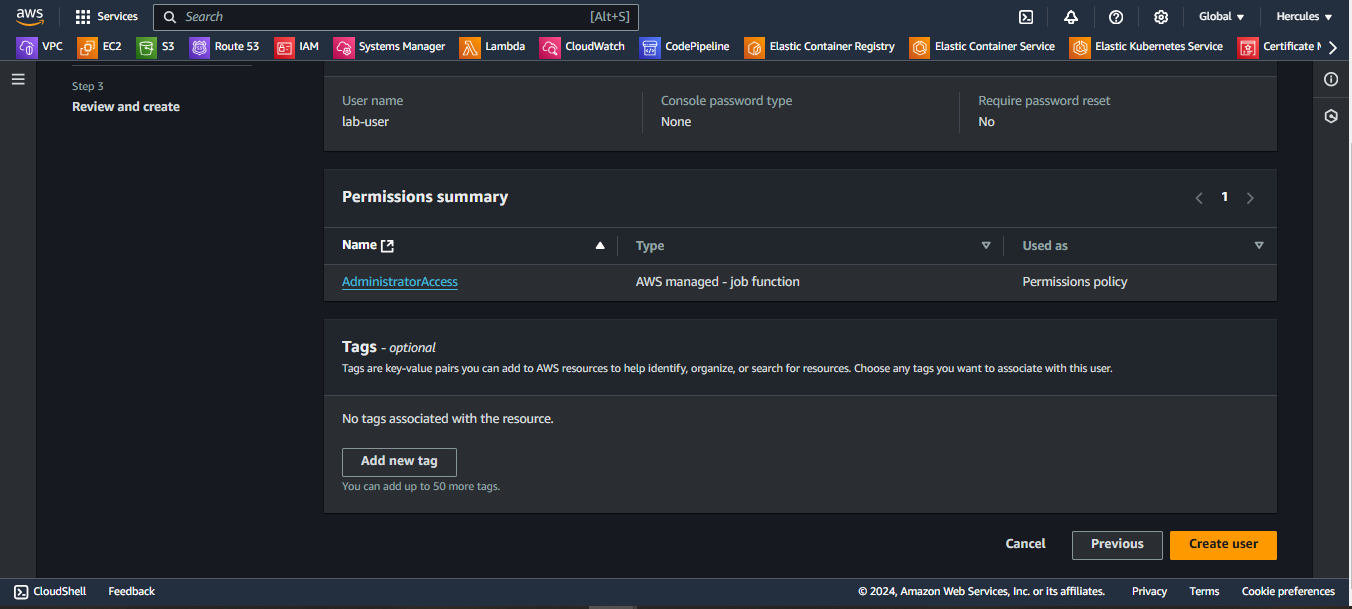
Go to inside IAM user has been created. Choose Create access key:
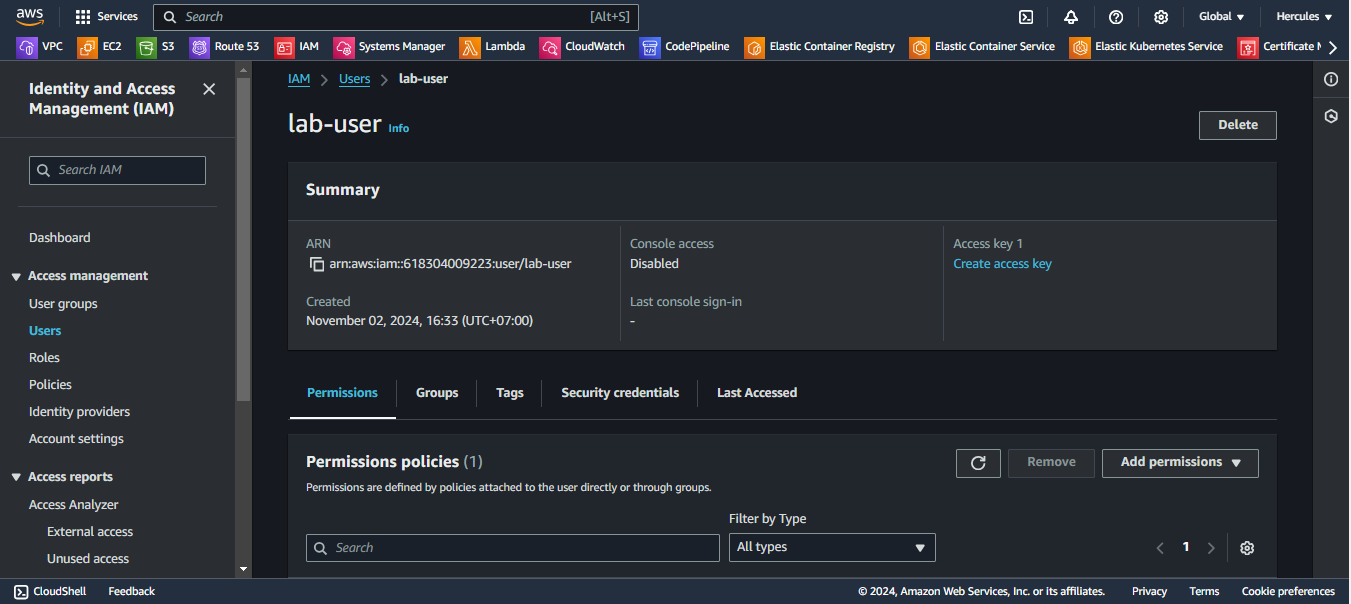
In Create access key page:
- Choose Use case: Command Line Interface (CLI)
- Choose on checkbox: I understand the above recommendation and want to proceed to create an access key.
- Click on Confirmation button to continue:

Set description tag, you can enter your description value if you want:
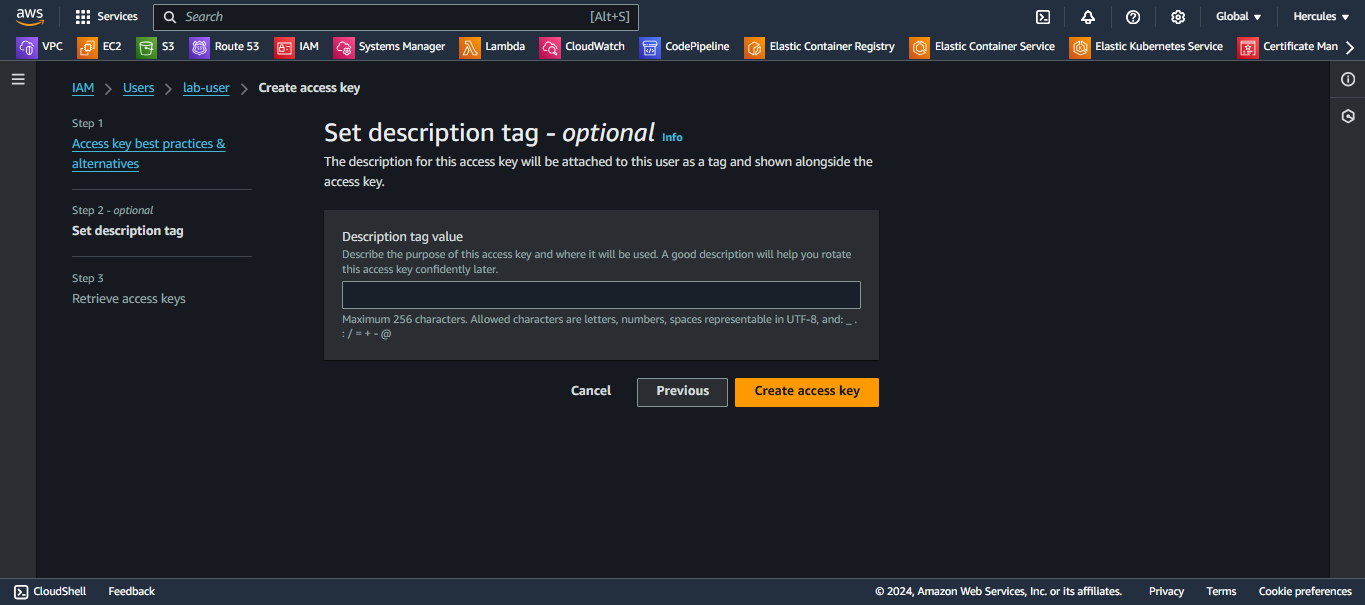
Finally, we can see Access key and Secret access key. Please copy two values and paste into Terraform to continue:
AWS IAM (Identity and Access Management) user’s access key and secret access key are displayed only one times when they are initially created. After that, you cannot retrieve the secret access key again through the AWS Management Console, AWS CLI, or any other method.

If you lose your AWS access key and secret key, you will be unable to access AWS resources programmatically, and you’ll need to create new keys to restore access; additionally, unauthorized users could potentially exploit the lost keys to incur charges or steal your resources. You’ll need to delete the old access key and create a new one immediately.